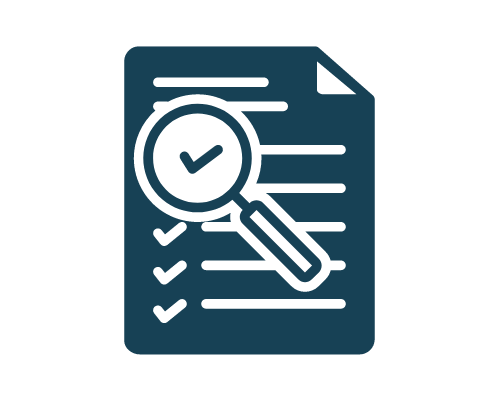
A planned giving audit is a robust evaluation tool that can revitalize and provide strategic direction to a new or existing Gift Planning program. A planned giving audit is a systematic review of your gift planning program to assess its current status and make recommendations to improve its effectiveness. The audit involves several key elements:

The Assessment of Your Current Status
- Assessment of the current donor base to obtain demographic information regarding the primary sources of planned gifts and the number of potential donors.
- Examination of gift activity reports to learn the number and dollar volume of various categories of gifts, including existing irrevocable deferred gifts, confirmed revocable deferred gifts, outright gifts that entailed gift planning, and distributions from estates and from terminated irrevocable deferred gifts.

An Internal 360 Review
- This includes your program infrastructure, data management structure and policies, endowment structure and policies, staffing, board involvement, board committees, and similar practices.
- Interviews with gift planning staff, selected fundraising officers, gift administrators, and fundraising program leadership all focused on understanding the responsibilities of the various persons and their reporting relationships.
- Review of fundamental policies, such as those addressing gift acceptance, investment, and endowment.
- Analysis of the budget for the planned giving program to determine what resources are currently allocated to gift planning and what return on this investment is being realized.

An External Review
- This includes your marketing materials, marketing plan, marketing scorecard, donor stewardship, relationship with professional advisors, working relationship with other development officers, integration of planned giving into the charity’s events and marketing, and similar practices.
- Benchmarking of the charity’s efforts against successful gift planning programs of comparable institutions in terms of marketing. Consideration of marketing material, including the existing marketing plan, collateral publications, and website.

Analysis and Reporting (including actionable items)
- Feasible updates to the internal and external practices and proposed operational and marketing plans.
- Projection of attainable goals for the coming years with respect to the number and dollar volume of new gifts arranged and identified for different categories.
- Implementing best practices from the benchmarking initiatives that these institutions have found to be most effective, the metrics they use for evaluating staff performance, how to integrate major and planned gifts, and how they have incorporated and counted planned gifts in a capital campaign.


When to Conduct an Assessment
Charities decide to conduct an audit for many reasons. Some of the most common purposes include starting a new planned giving program, revitalizing a stalled program, moving a mature program to the next level, or incorporating planned gifts into a capital campaign.

Deliverables
In most organizations, the greatest reason to conduct a comprehensive program assessment is to ensure your planned giving program is entirely integrated properly into your organization.
- A fulling integrated program will allow your donors to think holistically about their financial picture and the impact they can have on your organization.
- Provides your donors a method to effectuate their ultimate legacy gift for your organization.
- Engages more donors at a higher gift level and the ability to optimize each donor household.

Initiating a Gift Planning Program
Development programs usually start with an annual fund, special events, and membership. Some charities never move beyond this stage, while others move quickly to the next level of leadership and principal gifts, capital campaigns, and ultimately to planned gifts. When a charity is considering implementing a planned giving program, an audit allows the charity to prepare for the additional responsibilities attendant with planned giving, to make infrastructure changes necessary to support planned giving (including staff and budget), and to incorporate the necessary steps into the following year’s implementation plan.

Desire to Develop an Elite Gift Planning Program Among Your Organizational Peers
Most planned giving programs begin with bequests, beneficiary designations (insurance and retirement plans), and non-cash gifts. Now the charity is ready to move to the next level, offering charitable gift annuities, charitable remainder trusts, charitable lead trusts, and establishing an endowment. The program may be staffed by a general development officer responsible for major gifts, capital gifts, or other development responsibilities. An audit will help identify staffing needs, develop a marketing plan, and set a budget, goals, and objectives.
Get a Complimentary General Analysis of your Planned Giving Program

